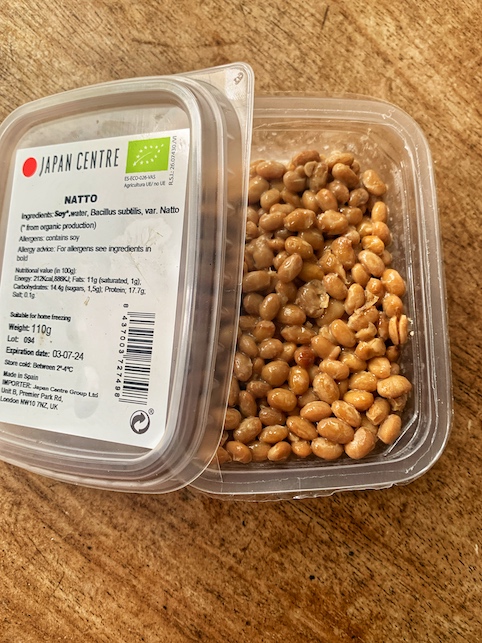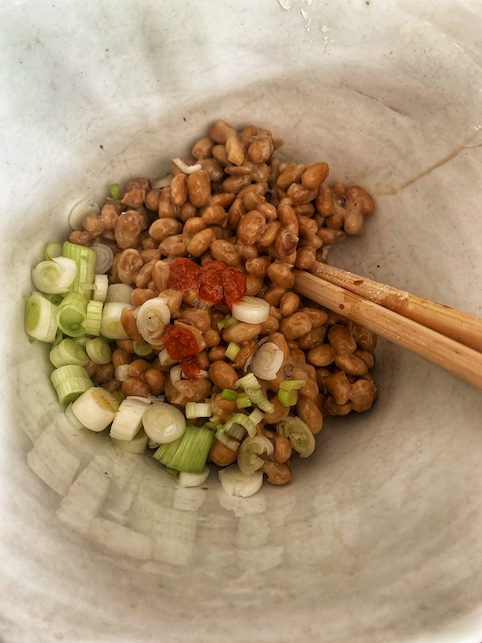Sometimes called Japanese Marmite, because the Japanese either love it or hate it, Natto is the superfood that divides taste opinion.

Japan Centre is a wonderful place, although for non- Japanese speakers much of what’s there is somewhat incomprehensible. Still, armed with Google you can check out most of the items online and one thing that recently caught my eye in the chilled cabinet. was a box of Natto
Quick research revealed this is a traditional Japanese food, a fermented one, and we all know how good ferments are. Soybeans are fermented with a starter culture of Bacillus subtilis. This results in a sticky, slimy, mess with strings between the beans. ‘Snotty beans!’ cried one family member when I got home and opened the box.
Fresh it doesn’t have much of an aroma, but as it ages it gets more like ammonia, not unpleasant but not exactly enticing to be honest. Reminiscent of when you left that Brie in a hot car.
Health wise, it has a lot going for it. It’s probiotic, of course, but it is also reputed to be the best plant based source of Vitamin K2, said to be important for bone and heart health.
It also produces a unique enzyme called Nattokinase during fermentation, as well as PQQ or pyrroloquinoline quinone. Vitamin K2, nattokinase, and PQQ are all things being studied with interest by nutritionists.
Apparently 70% of Japanese really like Natto but the other 30% will still eat it for its health benefits anyway. There is a dried version of Natto available for people that want those benefits but can’t stand the texture or taste.

So what do you do with it? The simplest way is to eat it over rice, and for a light lunch. I cooked up some Japanese rice and while that was cooking I put the Natto in a bowl, added a good helping of chopped spring onion, a dash of yellow mustard (or wasabi if you have it) and some soy sauce. Many Japanese people often also add bonito flakes. You then use chopsticks to give this all a good stir, which makes it even stickier and, it has to be said, less appealing visually
In Japan packs of Natto often come with sachets of Tare, a kind of thick, sweeter, soy sauce, and karashi mustard. Adding some mirin to soy sauce gives you an approximation of tare
While the family happily tucked into supermarket cheese and bean pasties, effortlessly cooked in our wonderful Ninja, I adopted a superior foody pose – half disdain, half envy, and got busy with my own bowl.
The flavour I found mild, the spring onions added some fresh crunch and the soy and mustard did their bit. The beans were a little bit slimy on the outside but not unpleasant and they had a good bite to them. I ate the lot quite happily.
I felt that it could well be an acquired taste, with my hankering for another bowl the next day but there was nowhere near to buy some. Hard line Natto eaters make their own, a process that seems no more difficult than any other ferment.
Do I feel better? Well it certainly made me a bit gassy, proof that something was going on down there, and it filled me up so that I had to delay our evening meal.
GIve it a go, you may feel a lot neater after eating Natto.
Japan Centre – the largest Japanese food hall in Europe is celebrating superfood month this May with a variety of events and in-store superfoods to purchase.
